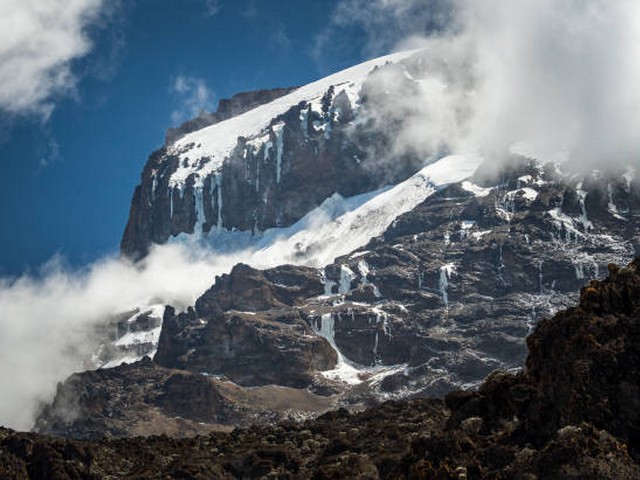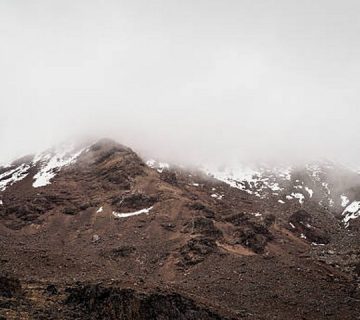Best Camera Settings For Kilimanjaro Trekking Photos
Embarking on a trek up the majestic Mount Kilimanjaro is not only a journey of physical endurance but also an extraordinary opportunity for visual storytelling. At the Kilimanjaro Centre for Trekking and Ecotourism (KCTE), we understand that capturing the breathtaking landscapes and vibrant cultural moments effectively requires more than just a camera; it demands the right settings to complement the vivid beauty of Africa’s highest peak. This guide is designed to help you immortalize your Kilimanjaro experience with stunning photography, ensuring that every shot reflects the awe-inspiring essence of your trek.
Why Perfect Camera Settings Matter on Kilimanjaro
Kilimanjaro’s diverse environments, ranging from lush rainforests to barren alpine deserts, present unique challenges and opportunities for photographers. The right camera settings are crucial to adapt to changing light conditions, capture distant landscapes, and freeze fleeting moments with clarity and detail. Whether you’re an amateur photographer or a seasoned pro, mastering these settings will elevate your photographic repertoire, allowing you to bring home not just memories but epic tales captured frame by frame.
Essential Camera Gear for Kilimanjaro
Before diving into the specific settings, it’s important to gear up appropriately. A reliable DSLR or mirrorless camera is ideal for its versatility and quality. Pair it with a resilient all-weather camera bag, lenses ranging from wide-angle for grand vistas to a telephoto for wildlife, and don’t forget extra batteries and memory cards, as charging facilities are limited during the trek.
1. Aperture Settings for Landscape Brilliance
When capturing the vast landscapes of Kilimanjaro, the aperture setting plays a pivotal role. For sharp, expansive mountain views:
- Set your aperture between f/8 and f/16. This range provides a deep depth of field, ensuring both the foreground and distant peaks are in sharp focus.
- Morning and late afternoon are ideal for landscape shots, as the soft, golden light adds a magical glow to the scenery.
2. Shutter Speed for Dynamic Captures
Kilimanjaro is alive with movement – from swirling mists to the fluttering of birds. To catch these dynamic elements:
- Use a faster shutter speed of at least 1/500th of a second for wildlife and moving scenes.
- For creative captures like waterfalls or clouds, experiment with a slower shutter speed (1/30th or slower) along with a tripod to achieve a smooth, flowing effect.
3. ISO for Perfect Exposure
The right ISO setting helps manage the lighting without compromising on image quality:
- Start with a low ISO (100 or 200) in bright daylight to reduce grain.
- Increase ISO gradually (up to 1600 or more) in lower light conditions such as dawn, dusk, or within the forested areas to avoid underexposed images.
4. Focus Mode for Sharp Subjects
Auto-focus (AF) is beneficial on the move, but for ultimate control, especially in varied lighting or for specific subjects:
- Switch to manual focus when photographing static subjects or landscapes to fine-tune the sharpness.
- Use AF-C (continuous autofocus) mode when capturing moving subjects like wildlife to keep your subject in constant focus.
Creative Techniques for Memorable Kilimanjaro Photos
- Play with Perspectives: Get down low or find high vantage points for unique angles on classic scenes.
- Capture the Culture: Engage with the local Chagga people and include them in your photos (with their permission), using a wider aperture to highlight these human elements against the stunning backdrop.
- Night Sky Photography: Utilize a tripod and a long exposure to capture star trails over Kibo or the stunning clarity of the Milky Way.
Tips for Protecting Your Camera Equipment
The mountain’s diverse climates can challenge your equipment. Protect your gear from moisture with waterproof covers, use UV filters to guard against lens scratches, and always carry silica gel packs in your camera bag to combat condensation.
Before You Go: Prepare with KCTE
At Kilimanjaro Centre for Trekking and Ecotourism (KCTE), we not only guide you on the optimal paths but ensure you’re fully prepared to capture the splendor of Kilimanjaro. Booking your climb with KCTE guarantees expert advice on both trekking and photographic opportunities that the mountain has to offer.
Frequently Asked Questions
Q1: What is the best type of camera for Kilimanjaro trekking?
A1: A DSLR or mirrorless camera with interchangeable lenses is ideal for its quality and versatility.
Q2: How do I protect my camera from cold and moisture on Kilimanjaro?
A2: Use weather-resistant camera bags, lens coats, and keep silica gel packs to absorb moisture.
Q3: Can I charge my camera batteries during the trek?
A3: Charging opportunities are limited, so bring extra batteries and consider a solar charger.
Q4: Are there restrictions on photographing local communities?
A4: Always ask for permission before photographing people. Respect local customs and privacy.
Capture the Summit with KCTE
Embarking on a Kilimanjaro trek is a photographer’s dream. With the right camera settings, each photo you take can turn into a masterpiece reflecting the mountain’s majesty and mystique. Ready to create unforgettable memories and stunning photos? Book your next adventure with Kilimanjaro Centre for Trekking and Ecotourism (KCTE), and let your photographic journey to the roof of Africa begin!
Embrace the challenge, capture the beauty, and tell the story of Kilimanjaro through your lens with us. Contact KCTE today, and let’s make your trekking and photographic dreams a reality on the mighty Kilimanjaro.




